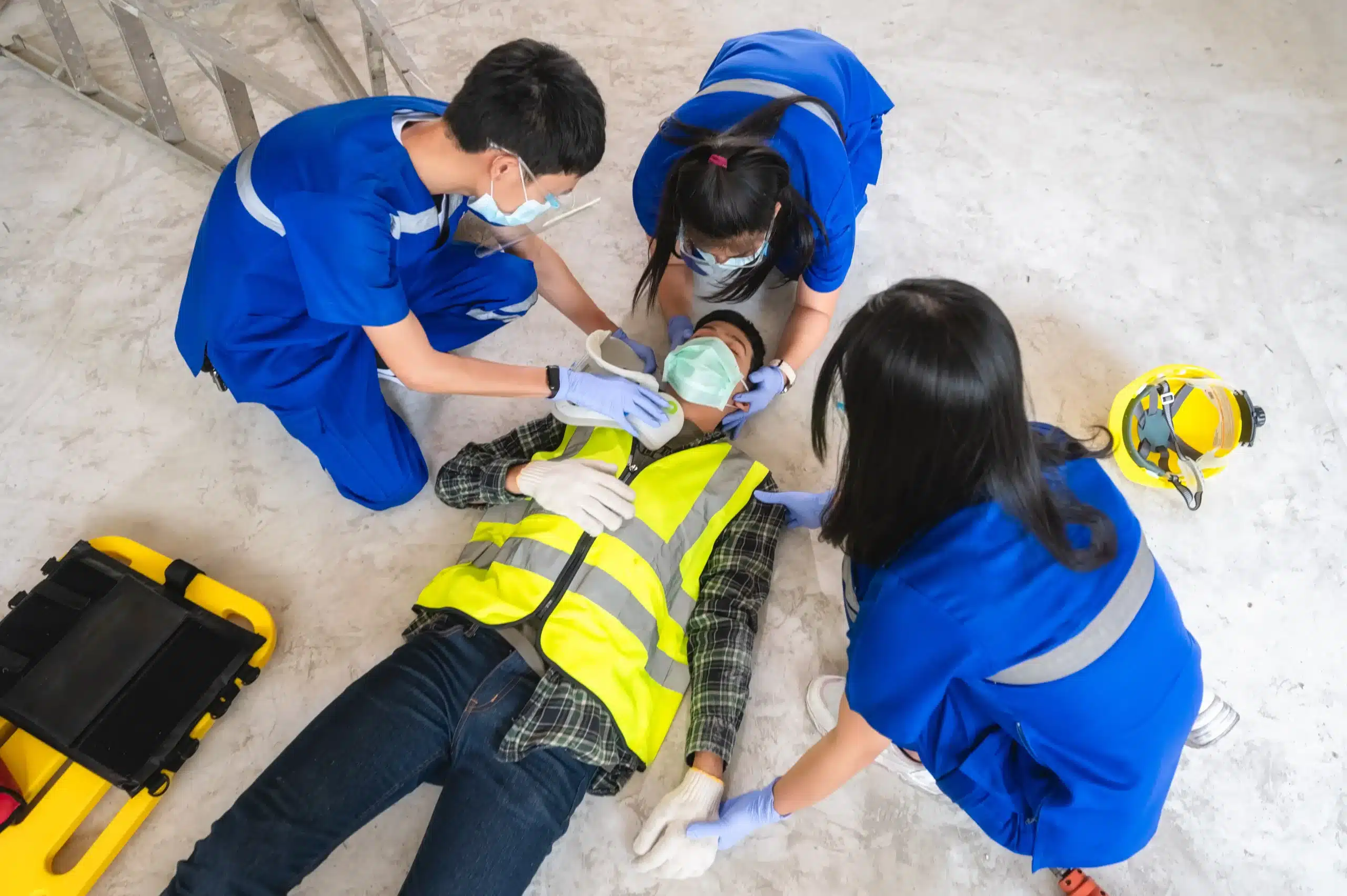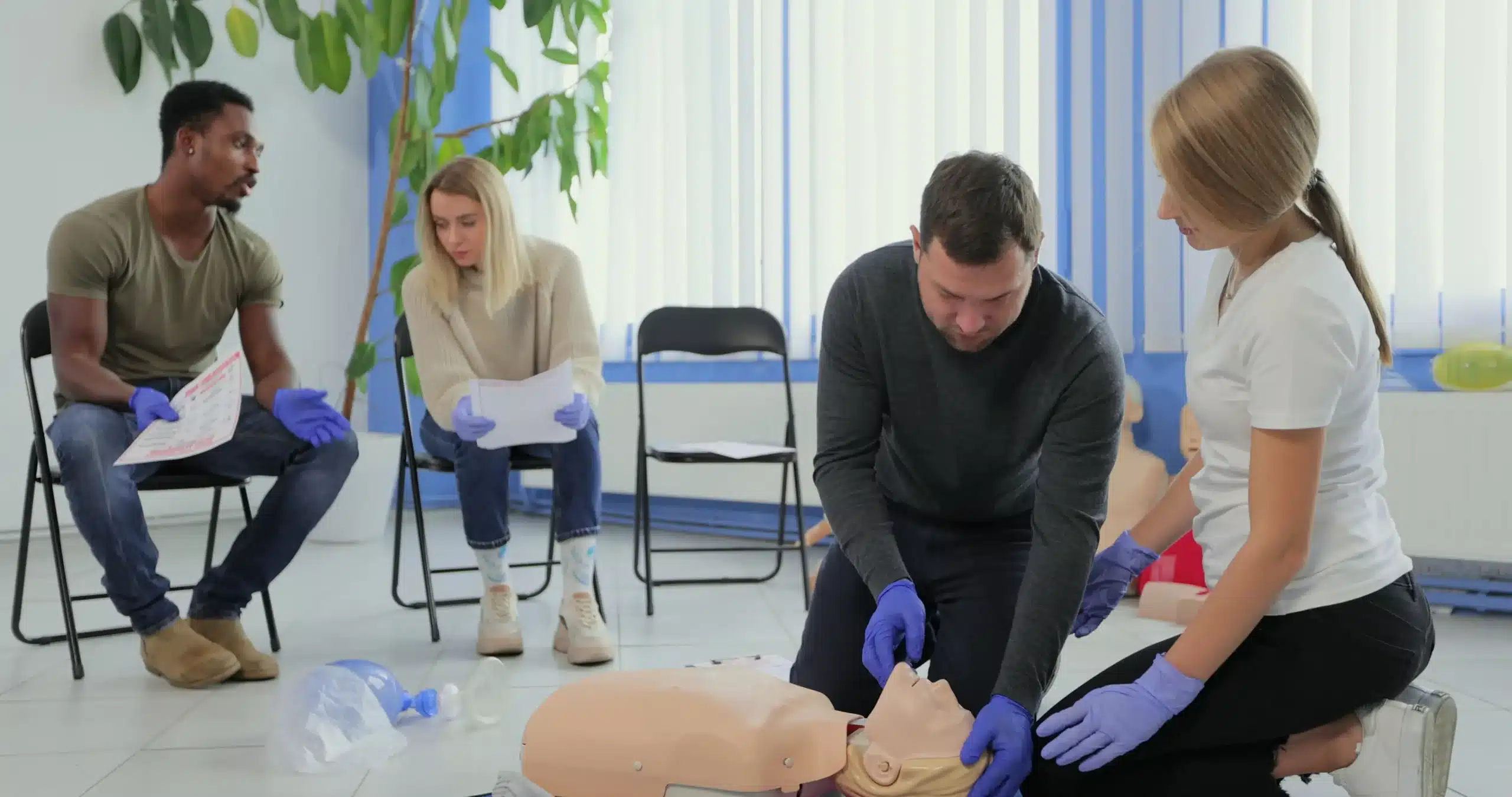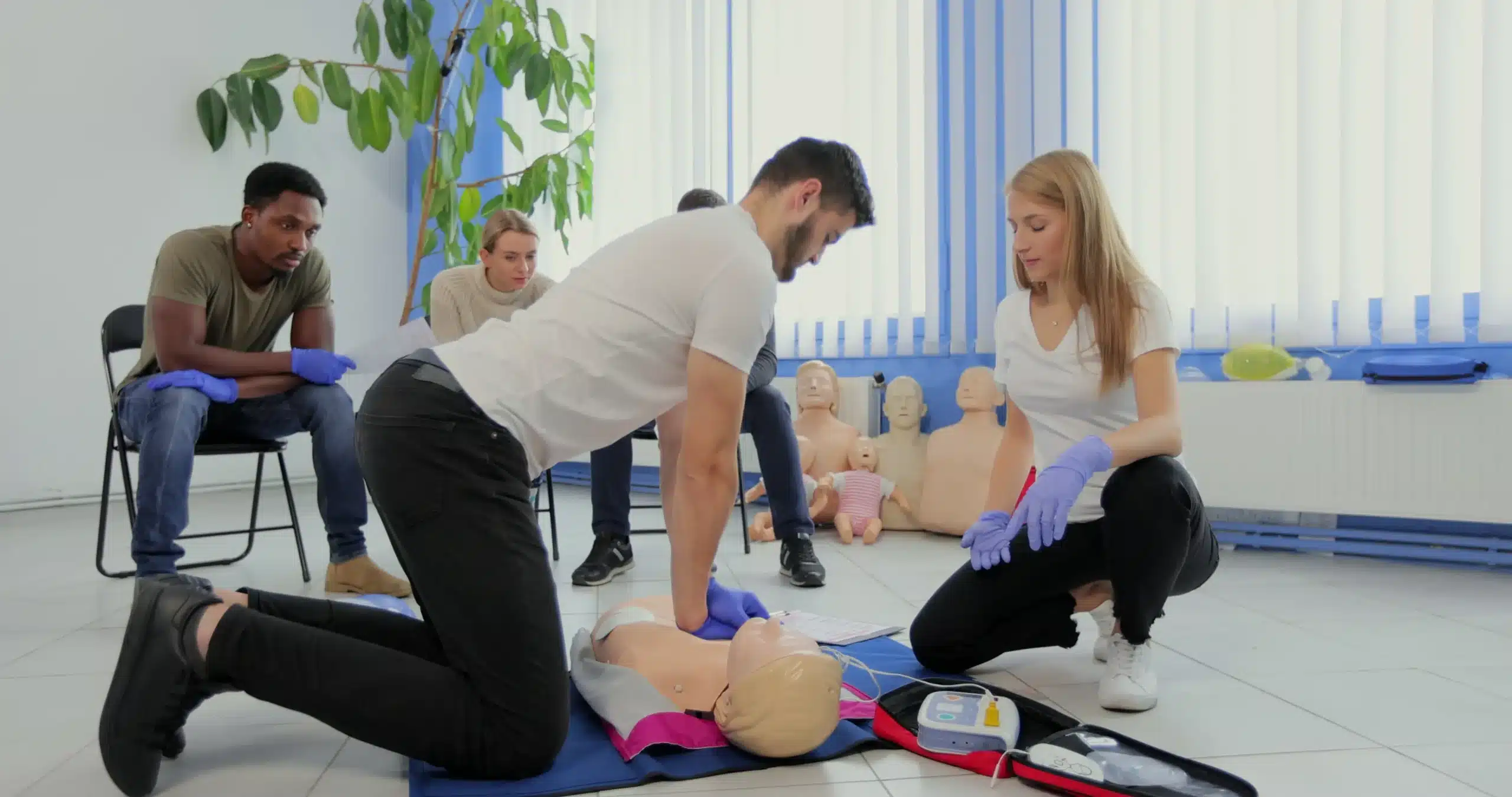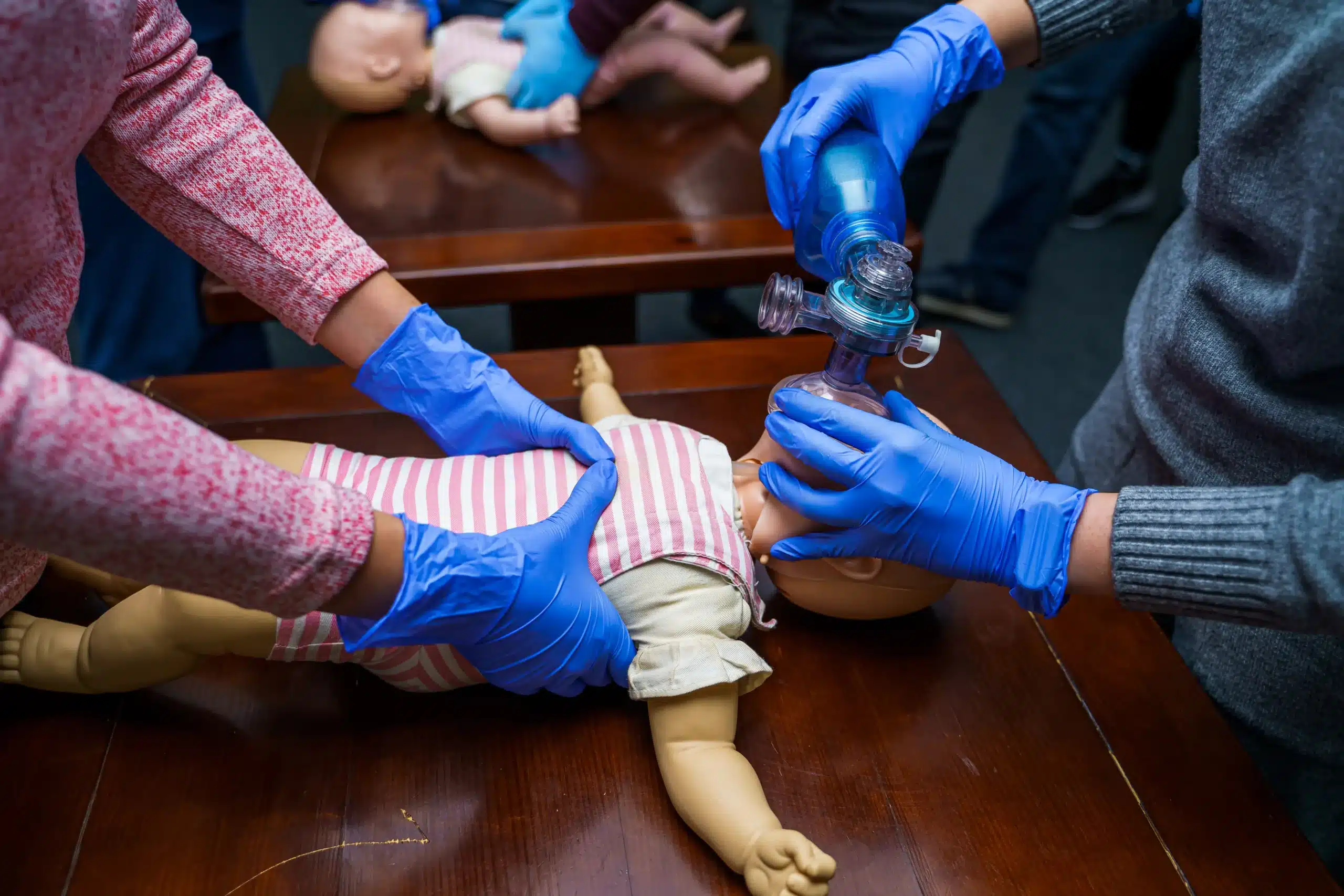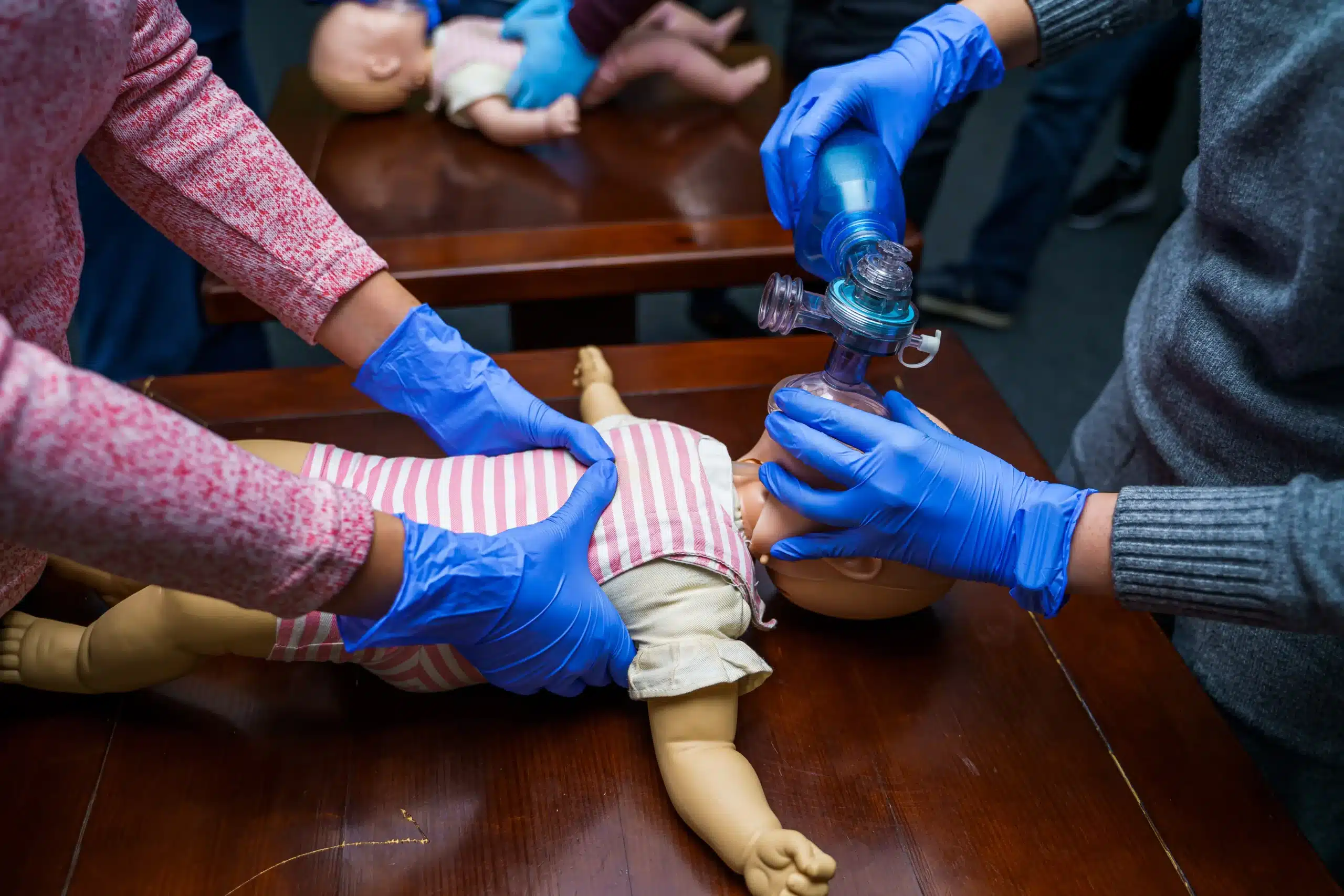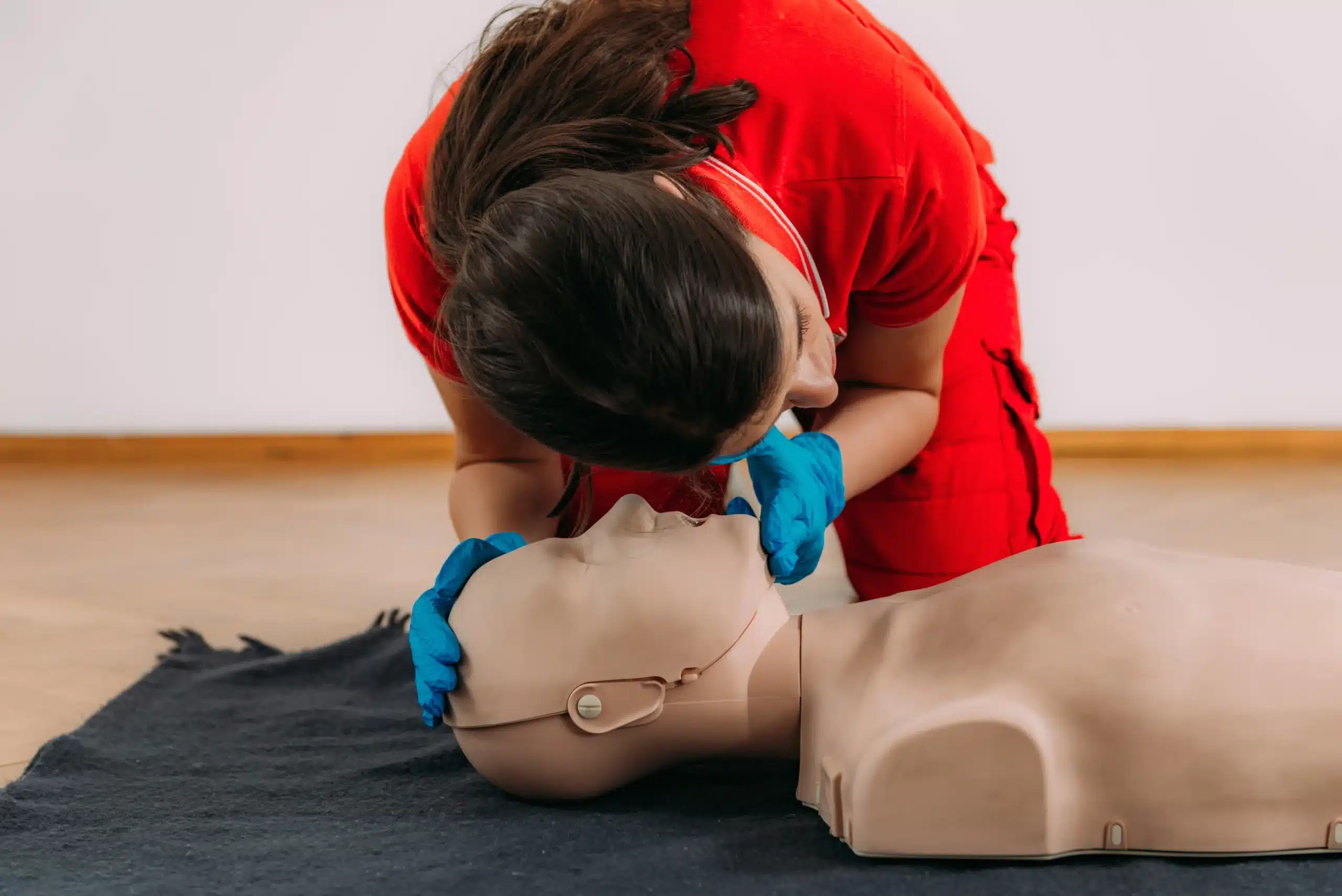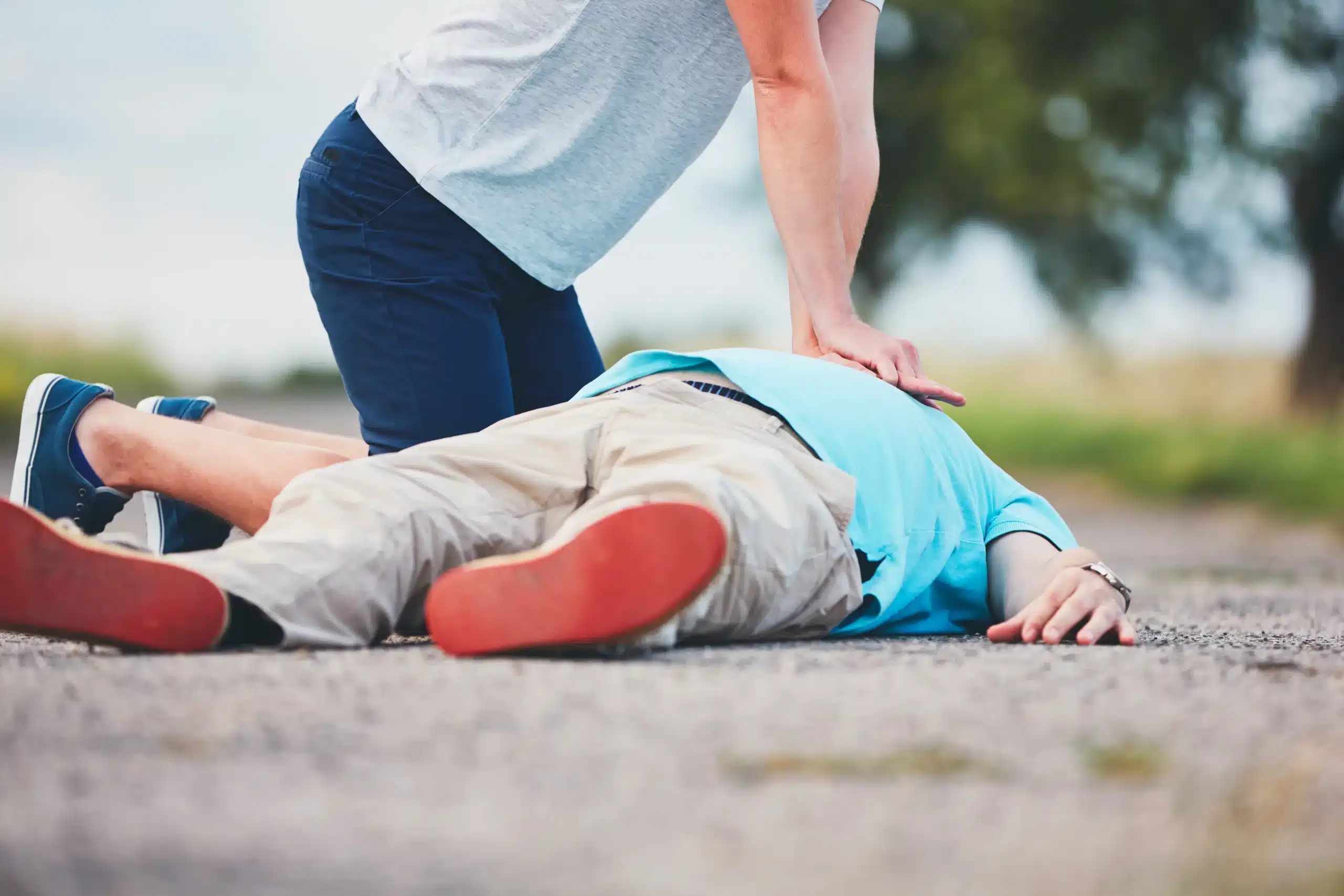Working with children, whether as a parent, teacher, or caregiver, brings immense joy and responsibility. Part of that responsibility is being prepared for the unexpected. Medical emergencies can happen anytime, and knowing how to respond can be life-saving. This comprehensive guide explores the importance of pediatric CPR and first-aid in Atwater, providing you with the resources and information you need to find the right training. We’ll delve into the specific techniques for infant and child CPR, discuss common childhood injuries and illnesses, and outline the steps to becoming certified. Empower yourself with the knowledge and skills to protect the children in your care.
Key Takeaways
- Pediatric CPR and First Aid equip you to handle childhood emergencies. These courses cover life-saving techniques for responding to breathing problems, choking, and injuries. Prioritize hands-on training that meets California’s EMSA requirements.
- Choosing the right course involves key considerations. Look for reputable certifications (AHA or Red Cross), opt for in-person training, and select a comprehensive curriculum. Experienced instructors and positive reviews are also valuable indicators of a quality course.
- Regular practice is crucial for maintaining your skills. Refresher courses, hands-on practice, and online resources can help you stay prepared and confident in your abilities to respond effectively to emergencies.
What is Pediatric CPR & First Aid?
Pediatric CPR and First Aid classes in Atwater, CA, teach you how to respond to medical emergencies specifically involving infants and children. These courses cover life-saving techniques like CPR (cardiopulmonary resuscitation), recognizing and responding to choking, and administering basic first aid for common childhood injuries and illnesses. Think of it as equipping yourself with the tools to handle everything from minor scrapes and burns to more serious situations like a child who’s stopped breathing. For parents, caregivers, and anyone working with children, this knowledge can make all the difference. Consider taking a class with Merced CPR Classes to learn these essential skills.
What Makes Pediatric Care Different?
Children aren’t just small adults—their bodies are different, and so are their medical needs. This means techniques for CPR, giving rescue breaths, and even using an AED (automated external defibrillator) are adapted for smaller airways and developing bodies. Understanding these crucial differences is at the heart of pediatric CPR and First Aid training. Learn more about these differences.
Why Parents & Caregivers Need Training
Emergencies can happen anytime, anywhere, and being prepared is the best way to protect the children in your care. Knowing how to perform pediatric CPR can significantly improve a child’s chances of survival during a critical moment. Plus, in California, in-person training is often required for childcare providers, making these courses essential for those working with children in the state. Even if it’s not legally required for your role, having these skills provides invaluable peace of mind and empowers you to act quickly and confidently when a child’s health is on the line. Check out First Lady Permanente for more information on these requirements.
Find Pediatric CPR & First Aid Classes in Atwater
Finding the right pediatric CPR and first-aid class can feel overwhelming, but several excellent resources are available in and around Atwater. Let’s explore some of your options:
American Heart Association Courses
The American Heart Association (AHA) sets the standard for CPR and first-aid training. Many providers in the area offer AHA-certified courses, covering everything from basic life support (BLS) to more advanced pediatric life support (PALS). These courses often include training for bloodborne pathogens, CPR/AED use in the workplace, and basic first aid. Check with your local training centers or the AHA website for specific course offerings.
Red Cross Offerings
The American Red Cross is another trusted source for CPR and first-aid certification. Their Adult and Pediatric First Aid/CPR/AED course covers essential skills for responding to emergencies in adults, children, and infants. This comprehensive course also meets OSHA workplace safety standards, making it a good choice for those needing certification for their jobs.
Local Hospital Programs
Hospitals like JCF Hospital frequently offer CPR and first-aid training programs for both healthcare professionals and the community. Check their website or contact their education department for more information on upcoming classes and registration details. These programs can be a great way to learn from experienced medical professionals in a hospital setting. JCF Hospital’s program is one example.
Merced CPR Classes Options
Merced CPR Classes offers a range of American Heart Association certification courses, including CPR, first aid, and BLS. They understand the importance of affordable training and offer group discounts, making their courses accessible to businesses, schools, and community groups. Their commitment to customer service and a low price guarantee makes them a popular choice in the area. Check out their website for course schedules and more information.
PediatricPlus Medic
PediatricPlus Medic provides EMSA-approved CPR and first-aid classes specifically designed for childcare providers. These courses meet the requirements for recertification and include the necessary EMSA stickers for your CPR and first-aid cards. They serve the Merced, Turlock, and Modesto areas, making it convenient for childcare providers in Atwater to find a class nearby. More information on PediatricPlus Medic and similar providers can often be found through local childcare resource websites.
Always CPR
Always CPR offers a convenient online class calendar to help you find pediatric first aid, CPR, and AED classes near Atwater. They provide a variety of courses to fit your schedule and needs. Their website is a valuable resource for locating local classes and learning more about your training options.
Get Certified in Pediatric CPR & First Aid
Getting certified in Pediatric CPR and First Aid gives you the skills to handle emergencies involving infants and children. Here’s what to expect:
Course Duration & Components
Pediatric CPR and First Aid certification courses typically run about eight hours. This covers in-depth instruction and hands-on practice. These courses, often combined as “EMSA Childcare CPR/First Aid,” teach essential skills for various childhood emergencies. Heads up: online-only courses aren’t accepted in California for childcare providers. Classroom-based learning is required to meet state EMSA requirements, ensuring you get the practical training you need. This certification is valid nationwide.
Hands-on Practice
Hands-on practice is key to Pediatric CPR and First Aid training. Because California requires in-person training for childcare providers, you’ll practice skills like CPR compressions, rescue breaths, and choking management on mannequins. This hands-on learning builds muscle memory and confidence, so you can act quickly in a real emergency.
Certification Validity & Renewal
After completing the course and skills testing, you’ll receive an American Heart Association (AHA) certification card. This nationally recognized certification is usually valid for two years. Many providers, like Merced CPR Classes, issue the card the same day, so you’re ready to provide care right away. Remember to renew your certification before it expires. Check with your certifying organization or Merced CPR Classes for renewal information.
Learn Key Pediatric CPR & First Aid Skills
Knowing how to respond to a medical emergency involving a child can be life-saving. This section covers essential pediatric CPR and first aid skills taught in our pediatric first aid classes. These techniques are tailored to the unique needs of infants and children, and mastering them can empower you to act confidently in a crisis.
Infant CPR Techniques
CPR for infants (under one year old) requires specific techniques. Chest compressions are performed using two fingers placed at the center of the chest, just below the nipple line. The depth of compressions should be about 1.5 inches. It’s crucial to maintain an open airway by slightly tilting the infant’s head back. For detailed guidance on infant CPR, including rescue breaths and the overall CPR sequence, check out the Merck Manual.
Child CPR Methods
For children aged one year to puberty (or weighing up to 55 kg), the CPR technique is slightly different. Use one hand for chest compressions, also delivered at the center of the chest. The recommended compression depth is about two inches. As with infants, maintaining an open airway is essential. The Merck Manual also offers a comprehensive guide to child CPR, covering everything from assessing the child’s condition to performing rescue breaths.
Choking Management
Choking is a frequent emergency in children. Knowing how to perform the Heimlich maneuver can dislodge an obstruction and save a child’s life. This technique involves a series of abdominal thrusts to expel the object blocking the airway. For more information on choking management and other pediatric first aid skills, visit First Lady Permanente.
Basic First Aid for Common Injuries
Beyond CPR, basic first aid knowledge is invaluable for handling common childhood injuries like cuts, scrapes, burns, and allergic reactions. Our first aid training covers how to assess the situation, clean and dress wounds, and provide appropriate care until professional medical help arrives. First Lady Permanente offers helpful guidance on basic first aid procedures for children.
Pediatric vs. Adult CPR: Key Differences
Knowing how to respond to both pediatric and adult emergencies is crucial, especially if you work with different age groups. While the basic principles of CPR remain the same—chest compressions and rescue breaths to circulate oxygenated blood—some vital differences exist between pediatric and adult CPR. Understanding these distinctions can significantly impact your life-saving efforts.
Compressions & Depth
The most noticeable difference is the force and depth of chest compressions. For adults, compress the chest at least two inches deep, using the heel of your hand with your other hand on top. With children, the depth changes. For infants (under one year), use two fingers placed at the center of the chest, just below the nipple line, compressing about 1.5 inches deep. For children over one year but before puberty, use the heel of one hand or two hands (if the child is larger) and compress about two inches deep. Regardless of age, aim for a compression rate of 100-120 compressions per minute. For a visual guide and hands-on practice, consider registering for a BLS CPR course.
Rescue Breaths
Another key difference is delivering rescue breaths. After 30 chest compressions, give two rescue breaths for both adults and children. Ensure you create a proper seal over the person’s mouth and nose (for infants) or mouth (for children and adults) and deliver gentle breaths until you see the chest rise. Review the course preparation materials for more detailed instructions.
AED Use
Automated External Defibrillators (AEDs) can be life-saving during cardiac arrest. While the general steps for using an AED are similar for adults and children, pediatric use requires important considerations. Use pediatric pads and cables for children under eight whenever possible. If unavailable, adult pads can be used, but ensure they don’t touch. The AED’s energy dose may also be lower for children. Our ACLS course provides comprehensive training on AED usage, including specifics for children.
Target Audience & Legal Requirements
Specific regulations and training requirements may apply depending on your profession and location. Childcare providers, teachers, and healthcare professionals often need specialized pediatric first aid and CPR certification. Check with your employer or licensing board for the required certifications. Merced CPR Classes offers group discounts, making it cost-effective for workplaces to train their staff. Our low price guarantee ensures you receive quality training at an affordable price.
Pediatric CPR & First Aid Training Costs in Atwater
Knowing the cost of training is a practical first step when you’re ready to learn CPR. Here’s a look at typical costs for pediatric CPR and first-aid certification in Atwater.
Average Course Prices
In Atwater, in-person BLS classes generally cost around $75. This usually covers instruction, skills practice, testing, and your CPR/AED/First Aid certification. Keep in mind that prices can vary based on the training provider and the course content.
Group Discounts & Packages
CPR training is often required for groups of professionals, like healthcare providers, teachers, and childcare workers. We understand that cost can be a barrier, which is why we offer group discounts for CPR courses. Businesses, schools, or community organizations can all benefit from these discounts. Contact us to learn more about customized training and pricing options for your group.
Merced CPR Classes’ Low Price Guarantee
We believe that high-quality CPR and first-aid training should be accessible to everyone. We’re committed to keeping our course fees competitive. Students enrolled at First Lady Permanente can also access discounted rates for initial and renewal courses. We encourage you to compare prices and find the best option for your needs and budget.
Choose the Right Pediatric CPR & First Aid Course
Finding the right pediatric CPR and first-aid course is crucial for effective training. It’s not just about learning the skills, it’s about gaining confidence and knowing how to respond in a real emergency. Here’s what to consider when choosing a course:
Factors to Consider
- Course Approval and Certification: Ensure the course meets California’s EMSA requirements for childcare providers if you work in that field. Nationwide validity is also important for broader recognition. Look for courses certified by reputable organizations like the American Heart Association or the American Red Cross. This ensures the curriculum adheres to the latest guidelines.
- Training Format: In-person, classroom-based courses offer hands-on practice and direct interaction with instructors. While online resources can supplement learning, they often can’t replace the value of practicing skills in a real-world setting. For California childcare providers, classroom-based training is typically required.
- Comprehensive Curriculum: A good course should cover a range of topics, from CPR and AED use for infants and children to essential first-aid skills. Look for a curriculum that addresses common childhood emergencies like choking, allergic reactions, and bleeding. Some courses also include adult CPR/AED training, which can be a valuable addition.
- Instructor Experience: Experienced, certified instructors bring real-world knowledge and can offer personalized guidance. Check the instructor’s credentials and look for reviews or testimonials to gauge their teaching style and expertise. A good instructor can make all the difference in your learning experience. Merced CPR Classes prioritizes experienced instructors committed to providing high-quality training.
Questions to Ask
Once you’ve identified a few potential courses, don’t hesitate to ask questions to ensure it’s the right fit:
- What is the course schedule and availability? Find a course that fits your schedule and location. Check the course calendar for upcoming dates and times. Many providers offer weekend or evening classes to accommodate busy schedules. Always CPR Training offers a convenient online class calendar.
- Are there any discounts or group rates available? If you’re training with a group, such as coworkers or family members, inquire about group discounts. Merced CPR Classes offers group discounts, making training more affordable.
- What is the certification validity and renewal process? CPR and first-aid certifications typically expire after a certain period. Understand the certification’s validity and the renewal process to maintain your credentials. Knowing this upfront helps you plan for future recertification. The American Red Cross provides clear information on certification validity.
Prepare for Your Pediatric CPR & First Aid Course
Getting ready for your pediatric CPR and first aid class involves a little prep work beforehand and knowing what to expect on training day. These simple steps will help you feel confident and prepared to learn these lifesaving skills.
Required Materials
Before your first class, make sure you have the required materials. Most importantly, you’ll need the American Heart Association BLS Provider Manual. This book covers the core concepts of Basic Life Support and is essential for the course. Having your manual ahead of time lets you familiarize yourself with the content before the instructor dives in. Check with your chosen training center to see if they offer the manual for purchase or if you need to acquire it separately.
Pre-Course Study
Along with the manual, many courses include an online component. Plan to spend about two and a half hours completing this online portion before your in-person training. This pre-course work introduces key concepts and prepares you for the hands-on practice to come. Getting this done beforehand means you’ll get the most out of your classroom time.
What to Expect on Training Day
Your pediatric CPR and first aid training will cover essential skills for responding to emergencies involving infants and children. The course follows California’s EMSA requirements for childcare providers, so you can be confident you’re learning the most current and relevant information. Expect hands-on practice and demonstrations of techniques like infant and child CPR, choking management, and basic first aid for common injuries. The goal is to leave class feeling empowered to handle a variety of childhood emergencies. You’ll also receive your certification upon successful completion of the course. Remember to wear comfortable clothes that allow for free movement since you’ll be actively participating in practice scenarios.
Maintain Your Pediatric CPR & First Aid Skills
Once you’re certified in Pediatric CPR and First Aid, regular practice is key to staying sharp and confident in your skills. Knowing what to do in an emergency can make all the difference. Let’s explore some ways to keep your skills fresh.
Practice Regularly
Consistent practice is the cornerstone of maintaining proficiency in Pediatric CPR and First Aid. Think of it like any other skill—the more you use it, the better you become. Set aside time each month to review the techniques. You can practice on a CPR manikin (if you have access to one) or even visualize the steps. Even running through the steps mentally can reinforce your knowledge and improve your response time in a real emergency. Many hospitals, like the John C. Fremont Healthcare District, offer resources and training programs to help individuals practice and maintain these essential skills.
Refresher Courses
While regular practice is essential, refresher courses provide a structured environment to update your knowledge and refine your technique. These courses cover the latest guidelines and recommendations, ensuring your skills are up-to-date. For childcare providers in California, regular refresher courses are often required by state regulations. Check with your local licensing board or employer for specific requirements. Even if a refresher isn’t mandatory, consider taking one every year or two to stay current.
Online Resources
The internet offers a wealth of resources to help you maintain your Pediatric CPR and First Aid skills. From videos demonstrating proper techniques to online quizzes testing your knowledge, there are plenty of ways to learn and practice at your own pace. Websites like Always CPR Training offer online class calendars and resources to help you find Pediatric First Aid and CPR AED classes near you, including options in Atwater, California. Take advantage of these resources to supplement your in-person training and stay prepared.
Register for Pediatric CPR & First Aid in Atwater
Ready to learn life-saving skills? Registering for Pediatric CPR and First Aid training in Atwater is straightforward. This section breaks down everything you need to know.
Step-by-Step Registration
Finding the right class is the first step. Start by checking the online calendars of local providers like Always CPR Training. They offer Pediatric First Aid CPR AED certification and list upcoming classes online. If you don’t see a class that works for you, reach out to them—many providers offer flexible scheduling. First Lady Permanente is another option, even arranging convenient onsite group training for childcare providers throughout the Central Valley.
Local Provider Contact Info
For questions about Pediatric CPR and First Aid classes, connect with training providers directly. Always CPR Training can help you find local instructors and learn more about their courses. You can also contact First Lady Permanente in nearby Turlock for information about their programs, including options available in Atwater.
Merced CPR Classes’ Easy Enrollment
Merced CPR Classes makes enrolling in essential courses like BLS and Pediatric CPR easy. They’re committed to making these vital skills accessible to everyone—from healthcare providers to parents. Check their website for a streamlined registration experience.
Related Articles
- PALS Certification in Merced: Your Complete Guide – Merced CPR Classes
- CPR Classes in Merced: Your Complete Guide – Merced CPR Classes
- Pediatric Advanced Life Support (PALS) in Turlock – Merced CPR Classes
- Why CPR is a Lifesaving Skill in Healthcare
- First-Aid Training in Merced: Your Complete Guide – Merced CPR Classes
Frequently Asked Questions
What’s the main difference between adult and child CPR? The techniques for CPR are modified for infants and children due to their smaller bodies and airways. This includes differences in the force and depth of chest compressions, rescue breaths, and AED usage. Infants, especially, require a gentler approach with chest compressions performed using two fingers.
How long is a typical Pediatric CPR and First Aid certification course, and what does it cover? Combined Pediatric CPR and First Aid courses, often called “EMSA Childcare CPR/First Aid,” usually take about eight hours. They cover infant and child CPR, choking procedures, basic first aid for common injuries, and how to use an AED. In California, in-person training is mandatory for childcare providers.
Where can I find Pediatric CPR and First Aid classes near Atwater, CA? Several organizations offer these courses, including the American Heart Association, the American Red Cross, local hospitals like JCF Hospital, and specialized providers like PediatricPlus Medic. Merced CPR Classes also offers a range of courses with group discounts. Online calendars, like the one provided by Always CPR, can help you locate classes near you.
How much do Pediatric CPR and First Aid classes cost in Atwater? The cost of these courses can vary, but generally, you can expect to pay around $75 for a BLS class, which often includes CPR, AED, and First Aid training. Many providers offer group discounts, so if you’re training with a group, be sure to ask about discounted rates. Merced CPR Classes offers a low price guarantee.
How can I maintain my Pediatric CPR and First Aid skills after becoming certified? Regular practice is essential to keeping your skills sharp. Review the techniques monthly, even mentally rehearsing the steps. Consider taking refresher courses every year or two to stay up-to-date with the latest guidelines. Online resources, such as videos and quizzes, can also help you maintain your proficiency.
